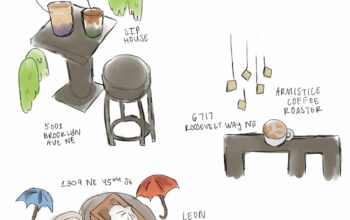How many hours of homework have Roosevelt teachers assigned in past years? An hour a day? Multiple hours? Well, not anymore. As of this year’s new homework and grading policy, there is now a limit to the amount of work teachers can assign each night – a policy with the potential to not only accomplish its intention of reducing homework, but also boost the student body’s mental health.
The new standard alters many aspects of homework and grading to improve student wellbeing, including adding a cap of 20 minutes of homework each night per regular class and 40 minutes per night for AP or College In the High School classes. It also ensures students will receive a minimum of 50 percent for all test grades.
Prior to the new homework policy, the Los Angeles Times reported that average “high school students are assigned three and a half hours of homework per weeknight, or more than 17 hours a week.” While this workload could be manageable for some, it is often far too much for those who have sports, clubs or other commitments outside of school.
If enforced correctly, this policy should alleviate much of the student burnout that is caused by the traditional high school schedule, an experience commonly shared among students.

Maxfield Kinna, pictured above, works on homework during school hours.
In a recent article by LNP – a Pennsylvania news group – detailing the schedules of multiple high school student athletes, the author writes that “Students are often pushed past their limits, which many times has a detrimental impact on their overall wellness.” In this way, burnout takes a toll on both physical and emotional health, making Roosevelt’s new policy even more crucial.
The new homework policy alleviates the necessity of cramming, the act of ingesting a large amount of information or completing massive amounts of work in a small period of time to prepare for a test or make a deadline.
Further, the policy will allow for greater comprehension of material. When students are given less homework, they spend more time on each assignment. Not only does this take some stress off of students, but it encourages students to produce more in-depth work.
In the first two months of school, I’ve found that almost all of my teachers respect these policy guidelines, and it has made a world of difference in my workload. I can now spend time doing things that I enjoy, while producing a higher quality of work and grade point average.
As stated by CalMatters, a California non-profit dedicated to journalism, “We kind of need to re-evaluate how we’re fostering that learning mindset within young people so that learning is not just about getting grades” – an ethos represented in Roosevelt’s homework mandate.
By cutting out extra work and placing a focus on the key points of a subject, there can be more time spent on thoroughly engaging with necessary concepts. This standard is the first step toward fostering a new, learning-oriented community.
While there is consensus that coming back to school has been difficult, we will be better able to acclimate to our new normal with the help of this new policy and perseverance from both teachers and students alike.



